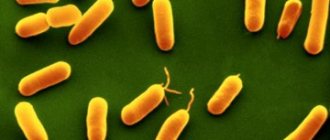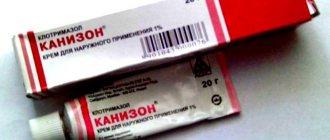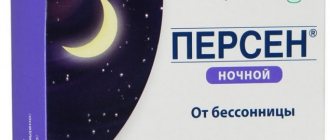Vaccination is a responsible matter, especially if a child has to undergo the procedure. According to the vaccination calendar, the baby is prescribed as many as 20 injections for 8 different diseases. A lot, isn't it?
The number of vaccinations can be reduced without compromising effectiveness, since there are vaccines that protect against several infectious pathologies at once. One of them is Infanrix Hexa, a drug that is unique in its composition and a combination product that has proven itself well in our country.
Release form and composition
The dosage form of Infanrix Hexa is a suspension for intramuscular (IM) administration:
- adsorbed vaccine, combined for the prevention of hepatitis B, poliomyelitis (inactivated), whooping cough (acellular), tetanus, diphtheria: white, upon settling, it separates into a white precipitate (when shaken, it completely breaks down) and a colorless transparent liquid (in 0.5 ml syringes) ;
- adsorbed, conjugated vaccine for the prevention of infection caused by Haemophilus influenzae type b: white lyophilized powder or dense mass; solution reconstituted from the lyophilisate: opaque, separating upon settling into a colorless liquid and a white precipitate, easily resuspended when shaken (in neutral glass bottles, 1 dose).
1 syringe with a suspension with 2 needles (or without them) is placed in separate plastic containers complete with 1 bottle of lyophilisate in a blister; 1 set in a cardboard box.
Active substances in 0.5 ml of adsorbed, combined vaccine for the prevention of hepatitis B, diphtheria, polio (inactivated), whooping cough (acellular), tetanus:
- diphtheria toxoid – at least 30 international units (IU);
- tetanus toxoid – at least 40 IU;
- pertussis toxoid – 0.025 mg;
- filamentous hemagglutinin – 0.025 mg;
- pertactin (outer membrane protein 69 kDa) – 0.008 mg;
- recombinant hepatitis B virus surface antigen (HBsAg) – 0.01 mg;
- poliovirus type 1 inactivated – 40 units (IU) of D-antigen;
- poliovirus type 2 inactivated – 8 units of D-antigen;
- poliovirus type 3 inactivated – 32 IU of D-antigen.
Auxiliary components: water for injection – up to 0.5 ml; aluminum phosphate – 0.2 mg; aluminum hydroxide – 0.5 mg; medium 199 (M 199) – 1.15 mg (including amino acids – 0.09 mg); sodium chloride – 4.5 mg.
Composition of 0.5 ml of adsorbed, conjugated vaccine for the prevention of infection caused by Haemophilus influenzae type b:
- active substance: capsular polysaccharide of Haemophilus influenzae type b – 0.01 mg (conjugated with tetanus toxoid ~ 0.025 mg);
- auxiliary components: aluminum phosphate – 0.12 mg; lactose – 12.6 mg.
Pharmacological properties
Pharmacodynamics
The immunogenicity of Infanrix Hex was assessed in clinical studies in children aged 42 days and older using two-dose and three-dose primary vaccination regimens followed by booster vaccination.
The protective level of antibodies to each of the vaccine antigens using a three-dose regimen was determined in 95.7% (at least) of those vaccinated. The protective level of antibodies to each of the vaccine antigens after revaccination was determined in 98.4% (at least) of vaccinated children.
Protective titers (antibodies) depending on the age of children 1 month after completion of the three-dose primary course of vaccination were:
- diphtheria toxoid (0.1 IU per 1 ml): age 2–3–4 months, number of vaccinated (N) = 196 (2 studies) – 100%; 2–4–6 months N = 1693 (6 studies) – 99.8%; 3–4–5 months N = 1055 (6 studies) – 99.7%;
- tetanus toxoid (0.1 IU per 1 ml): age 2–3–4 months N = 196 (2 studies) – 100%; 2–4–6 months N = 1693 (6 studies) – 100%; 3–4–5 months N = 1055 (6 studies) – 100%;
- pertussis toxoid (5 ELISA E per 1 ml): age 2–3–4 months N = 196 (2 studies) – 100%; 2–4–6 months N = 1693 (6 studies) – 100%; 3–4–5 months N = 1055 (6 studies) – 99.8%;
- filamentous hemagglutinin (5 ELISA E per 1 ml): age 2–3–4 months N = 196 (2 studies) – 100%; 2–4–6 months N = 1693 (6 studies) – 100%; 3–4–5 months N = 1055 (6 studies) – 100%;
- pertactin (5 ELISA U/ml): age 2–3–4 months N = 196 (2 studies) – 100%; 2–4–6 months N = 1693 (6 studies) – 100%; 3–4–5 months N = 1055 (6 studies) – 99.7%;
- hepatitis B virus surface antigen HBsAg (10 mIU/ml): age 2–3–4 months N = 196 (2 studies) – 99.5%; 2–4–6 months N = 1693 (6 studies) – 98.9%; 3–4–5 months N = 1055 (6 studies) – 98%;
- poliovirus type 1 (dilution 1:8): age 2–3–4 months N=196 (2 studies) – 100%; 2–4–6 months N = 1693 (6 studies) – 99.9%; 3–4–5 months N=1055 (6 studies) – 99.7%;
- poliovirus type 2 (dilution 1:8): age 2–3–4 months N = 196 (2 studies) – 97.8%; 2–4–6 months N = 1693 (6 studies) – 99.3%; 3–4–5 months N = 1055 (6 studies) – 98.9%;
- poliovirus type 3 (dilution 1:8): age 2–3–4 months N = 196 (2 studies) – 100%; 2–4–6 months N = 1693 (6 studies) – 99.7%; 3–4–5 months N = 1055 (6 studies) – 99.7%;
- capsular polysaccharide of Haemophilus influenzae type b (0.15 μg per 1 ml): age 2–3–4 months N = 196 (2 studies) – 96.4%; 2–4–6 months N = 1693 (6 studies) – 96.6%; 3–4–5 months N = 1055 (6 studies) – 96.8%.
Protective titers (antibodies) when using 4 doses of Infanrix Hex in cases of revaccination in the second year of life after a three-dose primary vaccination (N = 2009; 12 studies) were:
- diphtheria toxoid (0.1 IU per 1 ml): 99%;
- tetanus toxoid (0.1 IU per 1 ml): 99%;
- pertussis toxoid (5 ELISA E per 1 ml): 99%;
- filamentous hemagglutinin (5 ELISA E per 1 ml): 99%;
- pertactin (5 ELISA U/ml): 99.5%;
- hepatitis B virus surface antigen HBsAg (10 mIU/ml): 98.4%;
- polio virus type 1 (1:8 dilution): 99%;
- polio virus type 2 (1:8 dilution): 99%;
- polio virus type 3 (1:8 dilution): 99%;
- Haemophilus influenzae type b capsular polysaccharide (0.15 mcg per 1 ml): 99.7%.
Protective titers (antibodies) 1 month after the end of the two-dose primary course of vaccination with subsequent revaccination, depending on the age of the child, were:
- diphtheria toxoid (0.1 IU per 1 ml): 2–4–12 months, N = 196 (1 study) – 100%; 3–5–11 months, N = 352 (3 studies) – 100%;
- tetanus toxoid (0.1 IU per 1 ml): 2–4–12 months, N = 196 (1 study) – 100%; 3–5–11 months, N = 352 (3 studies) – 100%;
- pertussis toxoid (5 ELISA E per 1 ml): 2–4–12 months, N = 196 (1 study) – 99.5%; 3–5–11 months, N = 352 (3 studies) – 100%;
- filamentous hemagglutinin (5 ELISA E per 1 ml): 2–4–12 months, N = 196 (1 study) – 100%; 3–5–11 months, N = 352 (3 studies) – 100%;
- pertactin (5 ELISA U/ml): 2–4–12 months, N = 196 (1 study) – 100%; 3–5–11 months, N = 352 (3 studies) – 99.2%;
- hepatitis B virus surface antigen HBsAg (10 mIU/ml): 2–4–12 months, N = 196 (1 study) – 99.8%; 3–5–11 months, N = 352 (3 studies) – 98.9;
- polio virus type 1 (1:8 dilution): 2–4–12 months, N = 196 (1 study) – 98.4%; 3–5–11 months, N = 352 (3 studies) – 99.8%;
- poliovirus type 2 (1:8 dilution): 2–4–12 months, N = 196 (1 study) -98.4%; 3–5–11 months, N = 352 (3 studies) – 99.4%;
- polio virus type 3 (1:8 dilution): 2–4–12 months, N = 196 (1 study) – 97.9%; 3–5–11 months, N = 352 (3 studies) – 99.2%;
- Haemophilus influenzae type b capsular polysaccharide (0.15 μg per 1 ml): 2–4–12 months, N = 196 (1 study) – 100%; 3–5–11 months, N = 352 (3 studies) – 99.6%.
The protective effectiveness of Infanrix Hex against whooping cough varies between 84–88.7%. This is confirmed by the results of clinical studies conducted in Italy in children aged 2–4–6 months and in Germany in children aged 3–4–5 months. After completion of the primary pertussis vaccination regimen in Italy, without revaccination, protective efficacy was maintained for 60 months in the same group of children.
The immunogenicity of Infanrix Hexa was assessed in clinical studies after completion of a course of three-dose primary vaccination in children aged 2-4-6 months in approximately 300 premature infants born from 24 to 36 weeks of pregnancy, and after booster vaccination in children aged 18 to 24 months – in approximately 200 premature babies.
After 1 month after completion of the primary vaccination course, 98.7% of vaccinated people (at least) achieved a level of seroprotection against polio virus types 1 and 2, tetanus and diphtheria; 90.9% of vaccinated people (at least) achieved a protective level of antibodies to polio virus type 3, viral hepatitis B antigen and capsular polysaccharide of Haemophilus influenzae type b. 94.9% of vaccinated people were seropositive for antibodies to pertussis toxoid; to filamentous hemagglutinin and pertactin - all vaccinated.
After 1 month after revaccination, 98.4% of vaccinated people (at least) had a protective level of antibodies to each of the vaccine antigens, with the exception of pertussis toxoid (in at least 96.8%) and hepatitis B virus antigen (in at least 88 .7%). From the point of view of an increase in antibody concentration (15–235 times), the response to the administration of a booster dose indicates the adequacy of primary vaccination in relation to all antigens contained in Infanrix Hexa.
Studies conducted 2.5–3 years after revaccination confirmed the preservation of seroprotection against the hepatitis B virus in 85.3% of vaccinated people; against the capsular polysaccharide of Haemophilus influenzae type b and polio virus types 1, 2, 3 – in 95.7% (not less).
After completing a three-dose course of primary vaccination with further revaccination with the drug, the duration of the immune response was assessed in children 4–8 years old. 91% of children (at least) had immune protection against polio virus types 1, 2, 3 and capsular polysaccharide of Haemophilus influenzae type b; in 64.7% of children (at least) – against tetanus and diphtheria.
At least 87% remained seropositive for pertussis vaccine components (antibodies to PRN); 97.5% (antibodies to PHA); 25.4% (antibodies to pertussis toxoid) of children.
With regard to viral hepatitis B, immune protection after completing a three-dose course of primary vaccination with further revaccination with the drug was observed in more than 85% of vaccinated children aged 4–5 years and in more than 72% of vaccinated children aged 7–8 years.
In 48% (at least) of vaccinated children aged 11–12 years, after completing a two-dose course of primary vaccination followed by revaccination, immune protection against viral hepatitis B was observed.
Preservation of immune memory against hepatitis B virus in children 4–12 years of age has also been confirmed. These children underwent a course of primary vaccination followed by revaccination with the drug. In 96.8% (at least) of those vaccinated, the induction of immune protection was noted after administration of an additional dose of a monovalent vaccine for the prevention of viral hepatitis B.
Contraindications
Absolute:
- encephalopathy of unknown origin that developed within 7 days after the previous administration of a vaccine with a pertussis component. In such cases, vaccination against pertussis is canceled and only diphtheria-tetanus vaccine, as well as vaccines against hepatitis B, polio and infection caused by Haemophilus influenzae type b are continued;
- acute infectious/non-infectious pathologies, exacerbation of chronic diseases (temporary contraindications to vaccinations); routine vaccinations are carried out 14–28 days after recovery or during the period of remission or convalescence; in cases of mild acute respiratory viral infections and acute intestinal diseases, vaccinations are carried out immediately after the temperature has returned to normal;
- hypersensitivity following a previous vaccine against Haemophilus influenzae type b, polio, hepatitis B, whooping cough, tetanus, or diphtheria;
- individual intolerance to the components contained in the drug, as well as neomycin and polymyxin.
Relative (diseases/conditions in which the use of Infanrix Hex requires caution):
- thrombocytopenia;
- disorders of the blood coagulation system.
What diseases are vaccinated against?
According to the immunization schedule, a baby up to one year old should be vaccinated against 8 different infectious pathologies. Six vaccinations (out of the required 8) are already contained in Infanrix Hexa. This drug is a modern development in the field of microbiology and genetic engineering.
The composition of the vaccine is quite complex, because it was created as protection against several infections at once, the most dangerous in childhood:
- tetanus , where the causative agent is a rod-shaped bacterium. Dangerous and lethal. It is difficult to treat, and you can even get infected from a plant thorn;
- diphtheria . This disease is caused by Bacillus Löfer. The oropharynx usually suffers (swells). The pathology causes severe complications on the myocardium and central nervous system;
- whooping cough Bacterial infection. The causative agent is Bordetella pertussis. Dangerous of complications in infants. Manifests itself as a painful cough;
- hemophilus influenzae infection . The causative agent is a bacterial bacillus, Haemophilus influenzae type B, which causes meningitis and pneumonia in children. Abbreviated name – HIB (or HIB);
- polio , which is viral in nature. It is often asymptomatic, so diagnosing the pathology is difficult. Complications include paralysis;
- hepatitis B. Where “B” is the type of pathogen. It affects the liver. Very dangerous for babies under one year old.
The drug contains inactivated viruses and bacteria, acellular pertussis component, which means there are no living microorganisms in it and post-injection complications are excluded.
Instructions for use of Infanrix Hexa: method and dosage
The suspension (1 dose of 0.5 ml) is injected deep intramuscularly into the middle third of the anterolateral surface of the thigh, alternating sides for subsequent injections. Infanrix Hexa cannot be administered intradermally or intravenously.
The course of primary vaccination in accordance with the National Calendar of Preventive Vaccinations of the Russian Federation consists of three doses of the vaccine, which are administered in 3; 4.5 and 6 months. However, on the recommendation of a doctor, it is possible to use a different scheme of three-dose and two-dose primary vaccination. It is important to observe an interval between administrations of Infanrix Hex of 1 month (at least).
Revaccination, in accordance with the National Calendar of Preventive Vaccinations of the Russian Federation, is carried out once every 18 months of life. On the recommendation of a doctor, it is possible to carry out revaccination at another time, maintaining an interval of 6 months (at least) from the last vaccination of the primary course. A booster dose after a two-dose course of primary vaccination is recommended to be administered between 11 and 13 months of life; after a three-dose course of primary vaccination – up to 18 months.
In case of any violation of the vaccination schedule, you should follow the instructions for use of Infanrix Hex and the recommendations of the National Calendar of Preventive Vaccinations of the Russian Federation.
Infanrix Hexa vaccine is not used in children over 36 months of age.
For premature infants (at least 24 weeks of gestation), the recommended vaccination schedule consists of 3 vaccinations with further booster vaccinations. It is important to observe an interval between administrations of 1 month (at least). The revaccination dose is administered after 6 months (not earlier) from the last vaccination of the primary course, preferably before 18 months of life.
Before use, a syringe with an adsorbed vaccine, combined for the prevention of hepatitis B, polio (inactivated), pertussis (acellular), tetanus and diphtheria, is shaken until a homogeneous, uniform whitish suspension is obtained.
It is important to visually check both types of Infanrix Hexa vaccine for the presence of mechanical inclusions and/or changes in appearance. If they are detected, the vaccine cannot be used.
When using a package with two needles, before reconstituting the vaccine, remove the protective rubber cap from the syringe nozzle and tightly attach a sterile needle from a separate plastic container to the syringe.
To reconstitute the vaccine, remove the protective plastic cap and aluminum cap from the vial containing the lyophilisate. Next, into the bottle with the vaccine for the prevention of infection caused by Haemophilus influenzae type b, conjugated, adsorbed (lyophilisate), using a needle (by piercing the rubber stopper of the bottle), the vaccine contained in the syringe is completely injected, adsorbed, combined for the prevention of hepatitis B, polio (inactivated ), whooping cough (acellular), tetanus, diphtheria (suspension). It is important to wait until the lyophilisate is completely dissolved without disconnecting the syringe from the bottle (but not more than 5 minutes).
The reconstituted vaccine appears as a more turbid suspension than the original vaccine used for reconstitution. If there are other changes, the vaccine is destroyed.
Afterwards, draw the suspension back into the syringe, replace the needle with a new one and inject it immediately. The reconstituted vaccine can be kept at a temperature of 21 °C for 8 hours.
It is recommended to administer the vaccine at room temperature. Heating to room temperature also ensures the necessary elasticity of the rubber stopper of the bottle. To do this, the bottle is left at a temperature of 25 ± 3 °C for 5 minutes before introducing the suspension from the syringe.
Available data indicate the possibility of storing the components of the kit at a temperature not exceeding 25 °C for 6 days. During this period, Infanrix Hexa must be used, and after this period, the unused product is destroyed.
Features of the procedure
In the packaging of Infanrix Hexa, the manufacturer has provided fairly detailed instructions for use. It describes precautions on how to properly mix and administer the drug. The vaccine is administered intramuscularly. Babies are given an injection into the anterior thigh muscle, in its middle third.
To help with a possible anaphylactic reaction, it is recommended not to leave the medical facility for another half hour after vaccination. Moreover, it is better not to sit in line at this time, but to go outside, without going far from the clinic.
According to parents' reviews, the Infanrix Hexa vaccination is easily tolerated if the preparation rules are followed and contraindications are taken into account.
Side effects
Possible adverse reactions (> 10% - very common; > 1% and < 10% - often; > 0.1% and < 1% - uncommon; > 0.01% and < 0.1% - rare; < 0. 01% – extremely rare):
- infectious and parasitic pathologies: infrequently - infection of the upper respiratory tract;
- metabolism and nutrition: very often – loss of appetite;
- psyche: very often – anxiety, unusual crying, irritability; often - excitability;
- nervous system: infrequently – drowsiness; extremely rarely - convulsions (with or without elevated body temperature);
- respiratory system, chest and mediastinal organs: infrequently – cough; rarely - bronchitis;
- gastrointestinal tract: often – diarrhea, vomiting;
- skin and subcutaneous tissues: often – itching; rarely - rash; extremely rarely - urticaria, dermatitis;
- general disorders and disorders at the injection site: very often - fatigue, increased body temperature more than 38 ° C, swelling at the injection site (d < 5 cm), redness, soreness; often - compaction at the injection site, increase in body temperature more than 39.5 ° C, swelling at the injection site (d > 5 cm); infrequently - diffuse swelling of the limb into which Infanrix Hexa was injected, sometimes involving the adjacent joint.
Post-registration observations:
- blood and lymphatic system: rarely – thrombocytopenia, lymphadenopathy;
- immune system: rarely - allergic reactions (including anaphylactoid/anaphylactic reactions);
- nervous system: rarely - hypotensive-hyporesponsive syndrome (shock-like state or collapse);
- respiratory system, chest and mediastinal organs: rarely - apnea;
- skin and subcutaneous tissues: rarely – angioedema;
- disorders at the injection site and general disorders: rarely - bubbles at the injection site, swelling/severe swelling of the entire limb into which the injection was made.
special instructions
Before administering the drug, they conduct an examination and study the child’s medical history, paying attention to previous vaccinations and the likelihood of side effects.
As with any other vaccination, a protective immune response may not be detected in all vaccinated individuals.
Infanrix Hexa does not prevent the development of pathologies caused by any pathogens other than diphtheria corynebacteria, tetanus or pertussis, hepatitis B virus, polio virus types 1, 2, 3 and Haemophilus influenzae type b. However, a preventive effect is expected against hepatitis D, which can be prevented by vaccination, since hepatitis D (caused by hepatitis delta virus) does not occur in the absence of hepatitis B virus.
Since with the introduction of Infanrix Hex, like any other vaccines, an anaphylactic reaction may develop, it is important to have everything necessary to stop it at hand. For 30 minutes after immunization, the vaccinated person must remain under medical supervision.
In cases of the presence of the following reactions, temporally associated with the administration of a vaccine containing the pertussis component, the decision to use Infanrix Hexa is possible only after comparing the possible risks with the benefits (high incidence of whooping cough):
- an increase in body temperature of more than 40 °C, developing over 2 days, without another identifiable cause;
- hypotensive-hyporesponsive syndrome that developed within 2 days after vaccination;
- incessant crying, lasting for 3 hours or more, occurring within 2 days after vaccination;
- convulsions with or without elevated body temperature that occurred within 3 days after administration of the vaccine.
For progressive neurological disorders, including infantile spasms, uncontrolled epilepsy, or progressive encephalopathy, pertussis vaccination should be delayed until the condition is corrected or stabilized. The decision to prescribe a vaccine with a pertussis component is made on an individual basis after carefully weighing the possible benefits and potential risks.
Fever is more common in children receiving the drug concomitantly with pneumococcal conjugate vaccine compared to children receiving Infanrix Hexa vaccine alone.
When the drug was used in combination with the Prevenar 13 vaccine, an increase in the incidence of hypotensive-hyporesponsive syndrome and seizures (with or without an increase in body temperature) was observed in comparison with the use of the Infanrix Hexa vaccine alone.
As a psychological reaction to vaccination, severe weakness and fainting are observed after, and sometimes before, vaccination. In this regard, it is important before administering the drug to make sure that the child will not be harmed by possible fainting.
If there is a history of seizures with elevated body temperature, as well as a family history of seizures and sudden death syndrome, careful monitoring of the vaccinee is required for 2-3 days after the administration of Infanrix Hex (during this period, side effects may be observed).
An immunological response may not be achieved in HIV-infected patients.
Infanrix Hexa can be used in premature babies. In such cases, the immune response to some antigens is lower, which is typical for this category of vaccinated people. It is important to take into account the possible risk of apnea and the need to monitor respiratory function for 6 days during primary vaccination of children born before 28 weeks of gestation and, in particular, with a history of respiratory distress syndrome.
Since vaccination of children in this group is necessary, it is not recommended to delay or refuse primary vaccination. In such cases, it is carried out in a hospital setting under medical supervision (for 6 days).
When performing a urine test 7–14 days after administration of the drug, a positive test may be recorded, since the antigen of the capsular polysaccharide of Haemophilus influenzae type b is excreted in the urine. Other tests are performed during this period to confirm the diagnosis of Haemophilus influenzae type b infection.
Post-vaccination period
On the day of the procedure, you should not overeat; the child needs plenty of fluids and cool, fresh air. Contact with large numbers of people should be avoided. This is done in order to protect the child from infectious diseases.
It must be borne in mind that it is better to vaccinate children susceptible to frequent acute respiratory viral infections in the warm season, and those who suffer from allergies - in winter, in order to avoid pollen allergies.
It is better not to bathe the child directly on the day of the injection. The next day, all water procedures occur as usual. If the temperature has risen, then you should limit yourself to hygienic care using wet wipes.
Reviews of Infanrix Hexa
According to reviews, Infanrix Hexa is an effective vaccine that is well tolerated by children. In rare cases, rapid tearfulness, increased body temperature and local reactions are noted. Parents emphasize that it is much easier for the child to tolerate than locally produced vaccines, it is multi-component, well-purified and safe.
Almost all reviews about the vaccine are extremely positive; the only disadvantages noted are that it is paid, is quite expensive and is not always on sale.
How does the vaccine interact with other drugs?
The Infanrix vaccine is combined with all vaccinations of the National Calendar with the exception of BCG. However, the drug itself helps replace mono-vaccines and avoid unnecessary injections. Other vaccines must be given to other parts of the body.
If another drug was used at the beginning of immunization (Pentaxim or Tetraxim, for example), then it can be continued with Infanrix. And vice versa, if the first vaccination was Hexa, then the second and subsequent ones may be different. Although some doctors believe that this is undesirable and that other types of vaccines should not be used. The ineffectiveness of this approach has not been proven.
Infanrix can be mixed with Hiberix using the solvent from the first drug.
Many parents ask which product is better - Infanrix Hexa or Pentaxim. It is impossible to say for sure whether the first drug is more suitable for some, and the second for another patient. A doctor should discuss the advisability of using a particular vaccine. Clinical studies show that Pentaxim is better tolerated, and the likelihood of side effects after it is 2.5 percent lower. Children with allergies need to select the product especially carefully.










